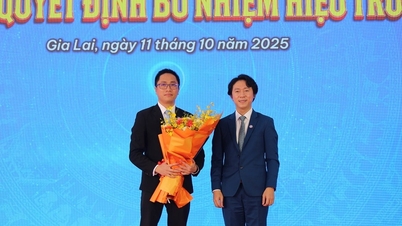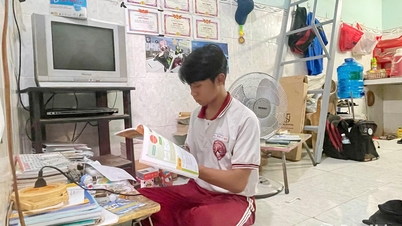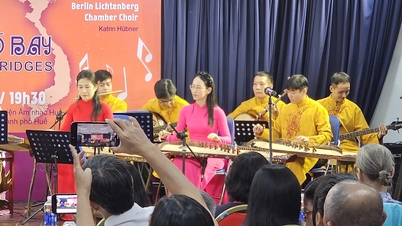The author is not a professor or a veteran researcher, but Hannah Cairo - a 17-year-old female student.
The conjecture Cairo rejected was called the Mizohata-Takeuchi conjecture, which concerned the way functions are formed from sine waves—the foundation of harmonic analysis. For years, mathematicians had been trying to prove the conjecture correct. But Cairo found a counterargument: it was wrong. The discovery immediately caused a stir, and at the same time brought the name of an extraordinary young talent to the public.
From homeschooling to graduate school
Born in the Bahamas, Hannah was homeschooled with her two brothers. By the age of 11, she had completed calculus through online lectures and had mastered advanced university textbooks on her own. But homeschooling felt confining and lonely. For Hannah, mathematics became a wide open world to escape confinement, a place she could explore at any time with just her imagination.

Hannah Cairo believes that "Mathematics is an art form." (Photo: Scientific American)
The turning point came when the COVID-19 pandemic left the family stranded in the US. This gave Hannah the opportunity to join math clubs and an online summer camp at the University of California, Berkeley. Her extensive self-study record impressed faculty, paving the way for Hannah to enroll in Berkeley’s dual-degree program, where she began taking graduate math classes, despite still not having a high school diploma.
In one exercise, Professor Ruixiang Zhang, a 2008 International Mathematical Olympiad gold medalist and PhD holder from Princeton, presented a simplified version of the Mizohata-Takeuchi conjecture for students to practice. Hannah didn’t stop there: she continued to dig deeper, testing many ideas and eventually found a counter-argument that caused the original conjecture to collapse. This discovery not only changed the landscape of a field, but also led to the collapse of many related conjectures.
Even she was skeptical at first. “I often think I have a proof, only to find out it’s wrong,” Cairo said. But this time, two things were different: She realized she could replace it with a simpler structure that would still give the same result, and, more importantly, she convinced both herself and Professor Zhang that the proof was correct.
Break all limits
Cairo’s journey to conquer the difficult problem was also challenging. Due to her lack of experience, her initial efforts were often flawed. “Every week I would bring a new idea to his office and ask, ‘Is this right?’ And he would say no,” Cairo recalls.

Hannah Cairo says she enjoys presenting math with colorful, cute slices. (Photo: Quanta Magazine)
But instead of getting discouraged, she continued reading, thinking, and experimenting. Eventually, Cairo constructed a strange function from the waves of frequency on the curved surface—just as the hypothesis required. Instead of canceling and amplifying each other as they normally would, the waves scattered their energy in irregular, almost fractal-like patterns—something the hypothesis asserted could not happen.
“Cairo’s paper shows that seemingly obvious and elegant hypotheses can still fall apart in unexpected ways,” says mathematician Fernando Oliveira. “But to see it, you need the right ‘scope’.”
Mathematician Anthony Carbery said: “I was like, 'Wow!' This is a problem I have loved for the past 40 years. Cairo's solution is not only fascinating but also shows extraordinary sophistication. When I learned that the author was only 17 years old, I was even more amazed.”
This discovery not only demolishes a decades-old hypothesis, but also opens up new approaches to many problems in harmonic analysis. “From now on, any similar problem, we will try to verify with Cairo-style construction,” added mathematician Oliveira.
The rejection of the Mizohata-Takeuchi conjecture also had a major consequence: the Stein conjecture, which was expected to bridge many other problems, was now forced to be reconsidered. Mathematics, once again, had to adjust its direction.
Skip bachelor's degree to go straight to doctorate
According to Quanta Magazine, after the results were announced, Cairo decided to skip the undergraduate level and go straight to her doctorate. Of the 10 universities she applied to, most rejected her because Cairo did not have a high school or university degree. Two schools initially agreed but were later blocked by administrators.
Ultimately, only the University of Maryland and Johns Hopkins accepted her. Cairo chose Maryland, where she will begin her doctoral journey this fall—her first formal degree.
Source: https://vtcnews.vn/thieu-nu-17-tuoi-giai-ma-duoc-bi-an-toan-hoc-ton-tai-suot-40-nam-ar960239.html



![[Photo] Ho Chi Minh City is brilliant with flags and flowers on the eve of the 1st Party Congress, term 2025-2030](https://vphoto.vietnam.vn/thumb/1200x675/vietnam/resource/IMAGE/2025/10/10/1760102923219_ndo_br_thiet-ke-chua-co-ten-43-png.webp)
![[Photo] General Secretary attends the parade to celebrate the 80th anniversary of the founding of the Korean Workers' Party](https://vphoto.vietnam.vn/thumb/1200x675/vietnam/resource/IMAGE/2025/10/11/1760150039564_vna-potal-tong-bi-thu-du-le-duyet-binh-ky-niem-80-nam-thanh-lap-dang-lao-dong-trieu-tien-8331994-jpg.webp)

![[Photo] Opening of the World Cultural Festival in Hanoi](https://vphoto.vietnam.vn/thumb/1200x675/vietnam/resource/IMAGE/2025/10/10/1760113426728_ndo_br_lehoi-khaimac-jpg.webp)































































































Comment (0)